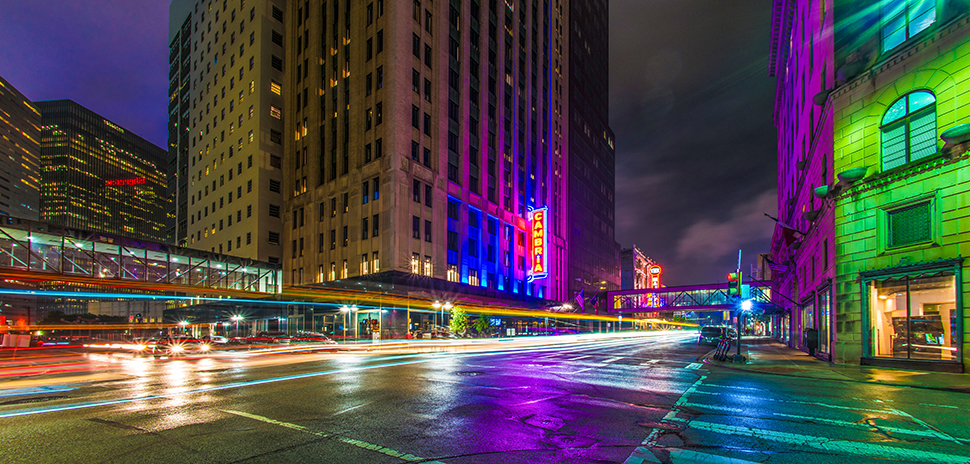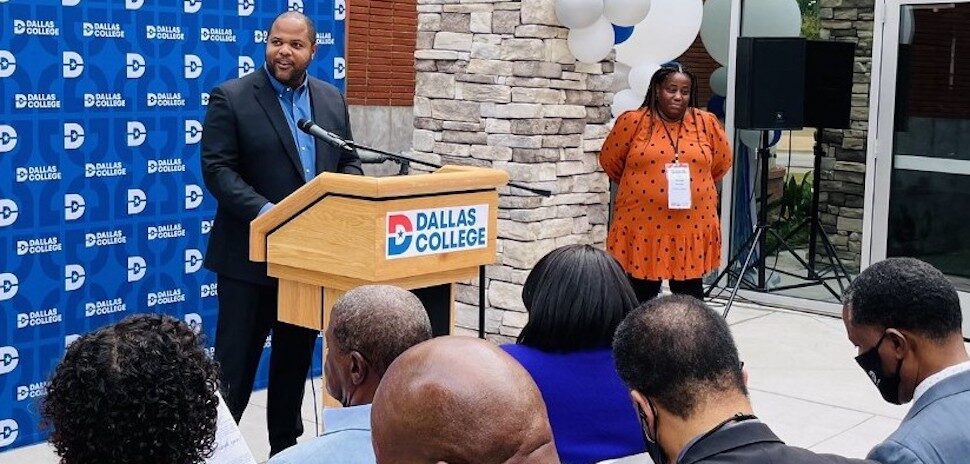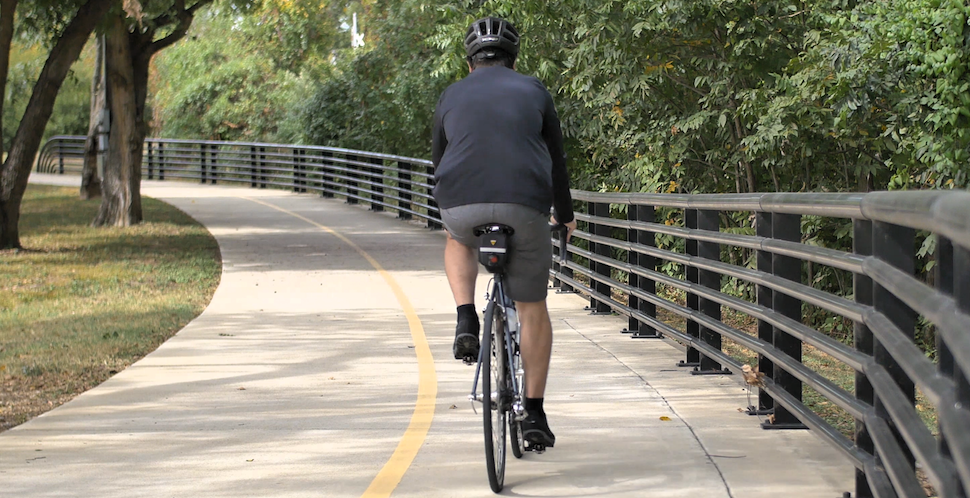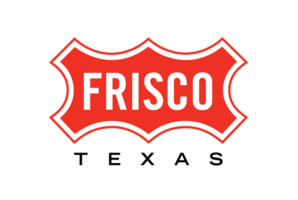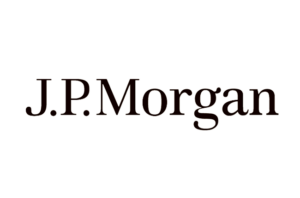There’s something tantalizing about unveiling hidden gems in the built environment, walking on floorboards older than anyone alive today, and writing the next chapter in a building’s life. That’s why developers across North Texas are pumping new life into old buildings with projects some might call complex, risky, even gnarly. But chances are, they also call them invigorating, rewarding, and game changing.
For those who complete the herculean task of resuscitating aged structures, the rewards can be exponential, both for the developer and the city.
READ NEXT Cities Nail Down Prosperous Futures From Their Pasts with Historic Redevelopment
Just ask officials in Dallas, Fort Worth, Arlington, Grapevine, Waxahachie, Plano, and McKinney. They’re among the slew of cities that have seen the benefits of the adaptive redevelopment projects that bring new people and businesses to their communities.
Harbingers of a rebirth in re-emerging areas
These buildings often draw first blood in the fight against urban atrophy and are the harbingers and symbols of rebirth in re-emerging areas. In recent years, North Texas real estate developers who have taken on many of these beautifully complicated building projects have been met with great success, bringing new life across the region.
The historic downtown areas of Dallas and Fort Worth, for example, have benefitted from extensive preservation and adaptive reuse efforts.
Dallas architect Norman Alston, who has led planning and restoration on more than 100 historic projects, says the organic appeal of existing neighborhoods can be difficult to recreate from scratch.
“There is evidence that developers have begun to take advantage of the fact that these buildings can be environmentally responsible, culturally invigorating and economically advantageous.”
Norman Alston
“As North Texas has grown, and as density has become a consideration alongside expansion, those at the forefront of urban development have begun to look at the existing and historic building stock from a different perspective,” Alston says.
Alston, whose projects include the U.S. Post Office and Courthouse redevelopment at 400 N. Ervay, South Side on Lamar, and the Lakewood Theater, says that’s understandable because buildings are very expensive undertakings.
Alston says he thinks the industry is “just beginning to appreciate” the inherent value of the area’s existing stock of buildings.
“I don’t think any industry has adopted the concepts of sustainability as enthusiastically as the architecture profession, and with that comes the appreciation of the inherent sustainability of existing buildings and the embodied energy they possess,” Alston says.
“There is evidence that developers have begun to take advantage of the fact that these buildings can be environmentally responsible, culturally invigorating and economically advantageous,” he says.
Adaptive reuse projects have become a valid tool for creating value in the metro, thanks to development tools such as TIFs and historical preservation tax credits, the efforts of forward-thinking organizations, public-private partnerships, and the pioneering spirit of the Dallas-Fort Worth commercial real estate community.
Presenting preservation
One of the most complete examples of the benefits of adaptive reuse and historic preservation in the region is Downtown Dallas’ rebirth. It’s taken more than a decade, but a commitment to quality adaptive reuse projects in downtown has created the groundswell necessary to bring new residents and reinvestment to the historical center of the city.
The preservation and reinvigoration of the central business district’s intricate Art Deco and Classical Revival facades root the blooming city in its rich history while propelling it higher.
Rents in the Central Business District have been steadily climbing and show no signs of a meaningful slowdown in the foreseeable future.
According to CBRE research, office rents in the CBD have climbed from $21.42 per square foot in 2014 to $25.83 in 2018. Downtown Dallas Inc. data shows that since 2008, the resident population of downtown Dallas has nearly doubled, rising from 6,689 residents in 2008 to 11,517 in 2017. Many of the early redevelopment projects in downtown were residential projects and have had a pronounced effect on the vitality of the city center.
The Mayflower Building, The Mosaic, The Interurban, The Dallas Power and Light Building, and other residential redevelopment projects have enabled people to live in the heart of the city without cutting out its roots. Because of projects like these, and the influx of residents, downtown’s retail scene is blossoming. And, as of April, the area has gained a full-size grocery store—a massive vote of confidence and evidence that downtown has reached critical mass. In 2018 alone, more than 50 retail options opened within a 2.5-mile radius of downtown.
The richness of what was built 80 to 100 years ago is hard to duplicate today, says Tom Reisenbichler, Southwest Region Director at Perkins+Will. “Often, you get a unique sense of place or quality from those historic preservations that you can’t duplicate with today’s economy,” he noted in a Real Estate Review design panel discussion last year.
Perkins+Will itself relocated in 2017 to the historic Dallas High School building. Built in 1907, the three-and-one-half story classical revival structure was renovated for commercial use after sitting vacant for 22 years. Matthews Southwest refurbished the 111-year-old city-designated landmark into approximately 105,000 square feet of office and retail space.
Honored by Preservation Dallas in 2018 with a special tribute award, Matthews Southwest has restored many other iconic Dallas structures including the Sears building (Southside on Lamar) and the Dallas Coffin Company building (Nylo Hotel, now the Canvas) in the Cedars neighborhood of downtown Dallas.
David Pickus, director of Business Development-Market Research at PWI Construction Inc., says hotel renovations like the Cabana Motor Hotel, and The Joule and The Statler are part of a nationwide trend of restoring historic hotels.
“The history of the hotel (The Statler), along with the new design, make it an attractive option for someone coming to Dallas either as a hotel guest or looking for a residential component,” Pickus says. “People can feel a connection to the grand hotel of the past and still get the contemporary conveniences of today.”
In more recent news, adaptive reuse veteran Todd Interests is about to take on “one of the largest historic renovations in the history of the United States,” according to a D CEO report at press time. The 1.5-million-square-foot First National Bank Towner, a project formerly known as The Drever, which occupies the largest vacant block in the core of downtown Dallas, is getting a $450 million redo. The black-and-white skyscraper was the original Dallas home of First National Bank. When it opened in 1965, it was the tallest tower west of the Mississippi River, Philip Todd, project lead and partner at Todd Interests, told D CEO.
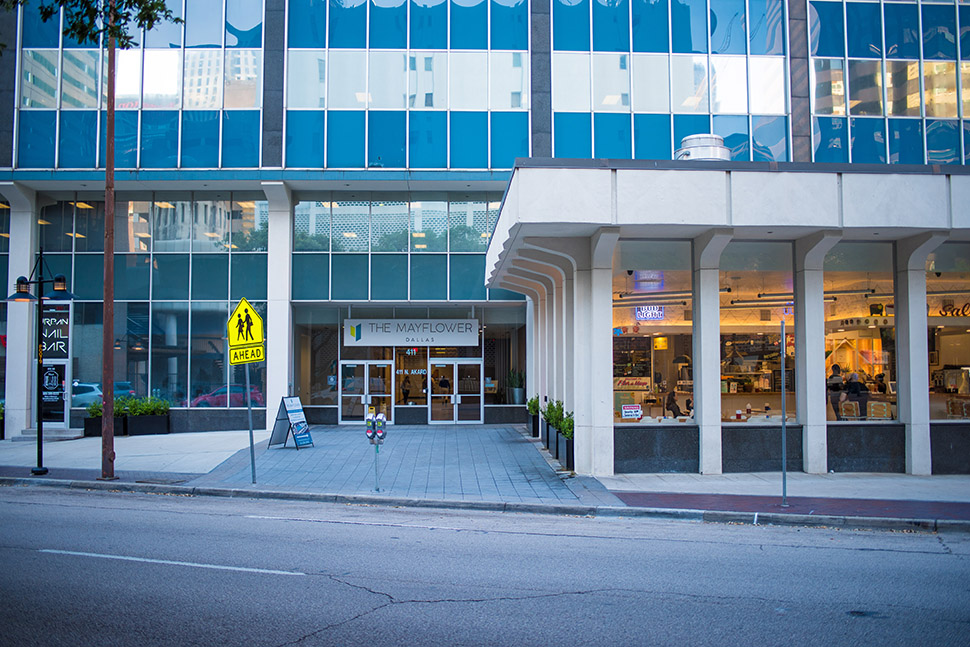
The Mayflower in downtown Dallas. [Photo: Michael Samples]
In downtown Dallas, Todd Interests is also undertaking the East Quarter development, including the 80-year-old Masonic Lodge that is being renovated into an office building called Block House.
Merriman Anderson Architects, involved in both the First National Bank Tower and the Dallas High School projects, has been an integral part of many historic redevelopment projects in downtown Dallas, taking on 22 such projects in the urban core alone and winning Preservation Dallas awards for 16 of them. Since 2002, Jerry Merriman has worked in offices in the heart of downtown, on Field Street near Akard Station. With each redevelopment project, he’s slowly seen the city center come to life around him, one building at a time.
The data backs Merriman up.
In Dallas and Fort Worth, The Preservation Green Lab study found that blocks of older, smaller, mixed-aged buildings generated 10,119 jobs and 5,479 jobs, respectively. And in Dallas across 23 historic tax credit qualifying projects, the area received nearly $370 million of private investment.
“Repurposed older buildings offer growing opportunities across the market spectrum. Housing and hotel conversions abound in American downtowns, bringing new life to once-vacant office buildings, department stores, and warehouses,” reads a study by the Preservation Green Lab titled “Untapped Potential: Strategies for Revitalization and Reuse.” “Many tech and startup companies gravitate to flexible, open-plan workspaces in older buildings with distinctive features, layers of history, and a built-in marketing story.”
But as any professional who has attempted an adaptive reuse project knows, they are gargantuan undertakings that are far from cut and dried.
None know this better than the folks who recently completed a restoration—or who are working through that process now.
The Western front
As downtown continues its evolution, the preservation efforts reach to the outer edges of downtown like the East Quarter, Deep Ellum, and the West End.
The West End, thanks to the Dallas Innovation Alliance, serves as a testing ground for Smart City technologies. The nonprofit and a group of corporate entities have dubbed the area Dallas’ Innovation District and are testing technologies and practices that improve efficiency, economic inclusivity, and quality of life.
The technologies here focus largely on optimization of the urban environment through real-time data gathering—smart water metering, pedestrian sensors, smart parking, and other tech tools that curtail waste and redirect resources.
Owners and developers in the West End are embracing the neighborhood’s new identity and leaning into efforts that make the built environment worthy of the kind of energy that can change a city from the inside out.
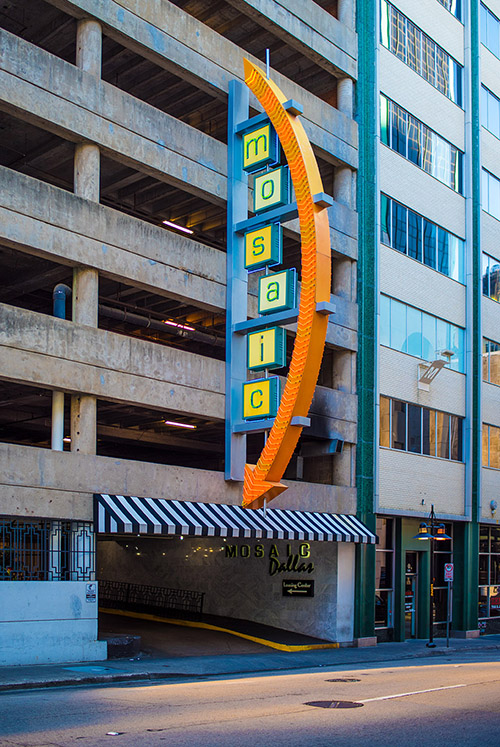
[Photo: Michael Samples]
Tanya Ragan is no stranger to revitalization projects. She was one of the driving forces behind the revitalization of the Dallas Farmers Market, one of the first projects to begin changing the “downtown Dallas is unlivable” narrative. Now, she’s placed herself squarely on the frontlines of the revitalization of the West End.
She’s wrapping up the renovation of the Purse Building, the former home of Purse & Co. Wholesale Furniture. Like the rest of the West End, the Purse Building is steeped in a rich—and sometimes painful—history.
On the day President John F. Kennedy was assassinated, the building was seized as the FBI’s war room seconds after the shots rang out. The building is well over 100 years old and has stories upon stories layered into its red brick walls. Committed to preserving those stories and the vitality of the original building, Ragan has carefully uncovered and preserved the original pine floors, the vault from the 1990s banking occupant, and the old tin ceiling on the top floor, while simultaneously fulfilling expensive regulatory obligations to the city in her efforts to transform the building into a hip 70,000-square-foot office building.
The whole process has taken a long time and a lot of money, and Ragan says projects such as hers and the others around it in the West End have an uphill regulatory battle to fight in addition to the market challenges.
“Now [the city] says you have to have the same regulations as Bank of America. It’s extreme. Those are the type of things that just because you’re in a historic building, you don’t get a free pass on,” Ragan says.
It’s faster and cheaper, Ragan says, to just tear a building down and build a new one in its place.
“Fortunately, we’ve got a lot of local people who believe in preservation. We’ve got people who are going into these communities and reviving these communities and repurposing some of these buildings,” Ragan says.
“They make our downtown special. We need more support to make [them] more economically viable.”
Ragan is working to counter out-of-date narratives, address systemic issues in the area, and sell the West End neighborhood as one on the rise.
Factory Six03 is another West End redevelopment, the next life of a former cracker factory on Munger Street. Granite Properties took on the 212,226-square-foot project in 2015 with architects GFF and Architexas and contractor DPR. As the team members peeled back layer after layer of slabs and got into the nitty-gritty of the mechanical and plumbing elements in the building, they realized the finish line was much farther away than they had anticipated.
READ NEXT Power of Towers: How Dallas’ Tallest Buildings Continue to Trumpet its Future
“Until you get to really peeling back the layers of finishes that have been implemented over the years, you’re never going to really fully understand the scope,” Granite Properties’ Aaron Bidne says. “You try your best to anticipate based on old drawings. Based on what you can observe, you try to understand what the scope is. But until you start peeling back the layers, you’re guaranteed surprises.”
And surprises there were.
After digging through multiple layers of slab, the Granite team discovered a well at the bottom of the factory that had to be sealed and disposed of with the oversight of the City of Dallas. In another life, the building was a 10-theater cinema whose builders removed pillars from the old factory and created numerous structural issues that Granite had to correct.
That’s what David Cunningham, senior director of development and construction at Granite Properties, calls “unknown unknowns.” It’s important to factor in the proper amount of time with these types of projects, he notes.
After all was said and done, anticipated and unanticipated costs totaled up. Bidne says the Factory Six03 redevelopment came in 20 percent over what Granite expected, and were it not for the tax credits it received for making the project an adaptive reuse project, it could not have been done.
City influence
Architect Alston says he believes working with existing and historic buildings isn’t more difficult, it’s just different.
“They require different skillsets for different needs,” Alston told The Real Estate Review. “Our entire design and construction industry is heavily focused on new construction and spends a great deal of time trying to streamline the process of bringing new developments from concept to reality.”
Cities also can affect projects through their building codes, and Alston says those codes have made progress recently in addressing the different needs of a renovation project.
“However, we have a long way to go, so the perception of difficulty persists,” he says. Alston says he often hears the old adage, “You don’t know what you’re getting into with an old building until you go in and open things up.”
He says he doesn’t find that to be true. “For those of us who do it all the time, few surprises await,” Alston says. “Previous generations had their own processes, materials, and techniques, and those are just as predictable as modern construction, if you are familiar with them.”
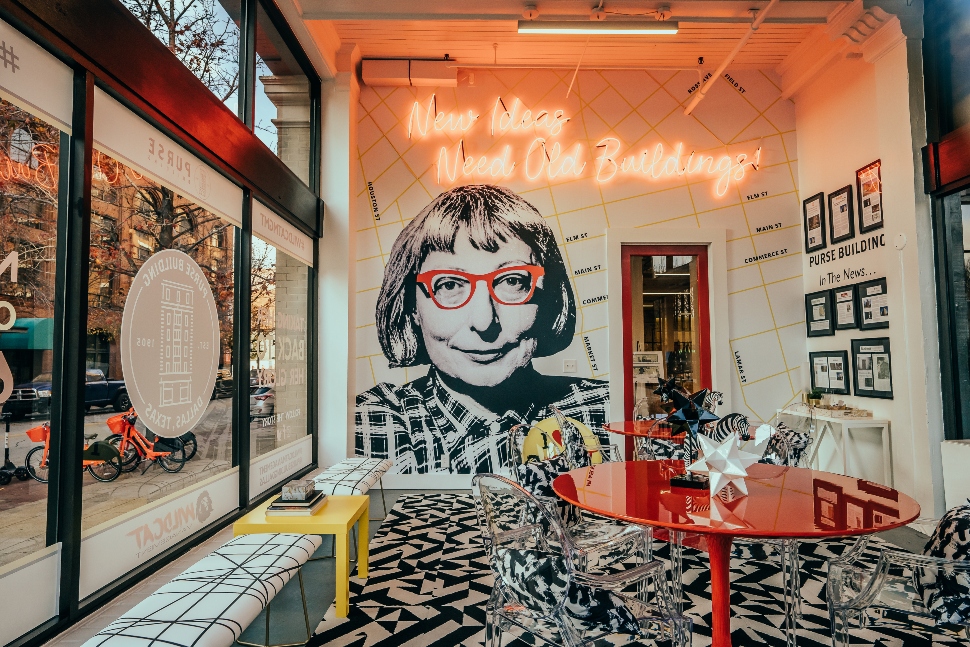
The Purse Building in downtown Dallas [Image: Wildcat Management]
Financial tools of rebirth
Though each adaptive reuse project is unique, they are almost all similar in one way: They are expensive.
In most cases, the entire interior and all of the buildings innerworkings need to be redone or repaired. “You need to plan at least 50 percent longer project development time for a historic project just because of the governmental hoops you’ve got to go through,” Tom Reisenbichler says. “In the end, it should be worth it because of the tax credits.”
James Adams, senior associate on Corgan’s commercial team, says that a redeveloped project must remain competitive.
“The single greatest challenge in repositioning older buildings is having the vision for a value proposition that effectively leverages the intrinsic merits of an existing facility, in structure, aesthetic, and meaning to create a financially sound project that competes with contemporary new construction,” Adams says.
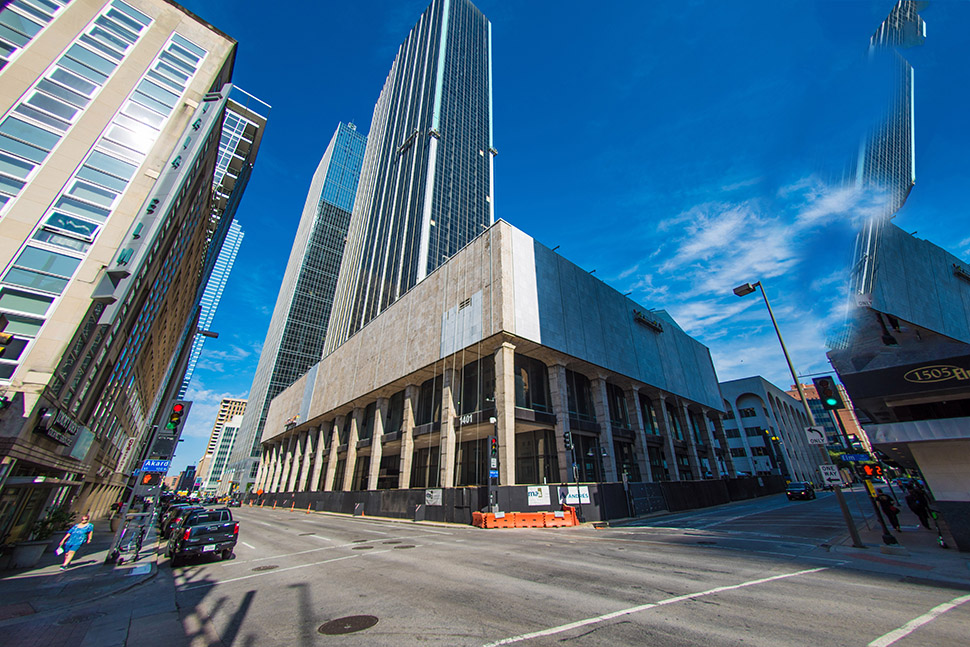
The former First National Bank Buiding in downtown Dallas is being redeveloped by Todd Interests. [Photo: Michael Samples]
Financial tools like the state and federal Historic Preservation Tax Credits and local TIFs are the linchpins of the adaptive reuse capital stack and take the edge off of the costs associated with rehabilitating historical buildings, bringing life to the fight for revitalization.
Using the Texas Historical Preservation Tax Credit, companies working on adaptive reuse projects can write off 25 percent of the value of their Qualified Restoration Expenses, which include things such as basic HVAC and electrical services, project management, and insurance.
The Federal Historical Preservation Tax Credit allows companies to write off 20 percent of the cost of QRE, for items such as architectural fees, engineering fees, ADA compliance, HVAC and electrical upgrades, and other major rehab costs.
If a project qualifies for both, the sum of the write offs can be significant and bring adaptive reuse from pipe dream to reality. Once attained, these credits can be traded in a marketplace, much like stocks or bonds, and are used as part of the capital stack for the project.
Rising tide of redemption through redevelopment
Viability, expertise, and faith in adaptive reuse projects are on the rise. This has led to widespread implementation throughout the metro. Downtown Fort Worth’s Sundance Square and the Stockyards are a prime example of this. So are the recent projects in the historic downtowns of Grapevine and Waxahachie, which garner tourism and activity for their cities.
In Fort Worth, at the historic Fort Worth Stockyards, the Horse and Mules Barns will be redeveloped to include an Autograph Collection boutique hotel, event barn, and “rustic resort” at the end of Mule Alley’s street of shops, eateries, offices, and live-entertainment venues. And the historic office building at 714 Main St. recently was approved for redevelopment as a hotel. The 97-year-old property will become a 232-room Kimpton hotel.
The potential to preserve and profit is capturing the imaginations of communities, financiers, and developers alike. There are a host of newly completed and underway adaptive reuse projects in the region. Success stories abound both at home and abroad. It’s no longer a question of possibility. It’s a question of priority.
This article was originally published in the Spring 2019 edition of the Dallas Fort Worth Real Estate Review.
Read the digital edition of Dallas Innovates’ sister publication, the Real Estate Review, on Issuu. The Dallas-Fort Worth Real Estate Review is published quarterly. Sign up for the digital alert here.
![]()
Get on the list.
Dallas Innovates, every day.
Sign up to keep your eye on what’s new and next in Dallas-Fort Worth, every day.

